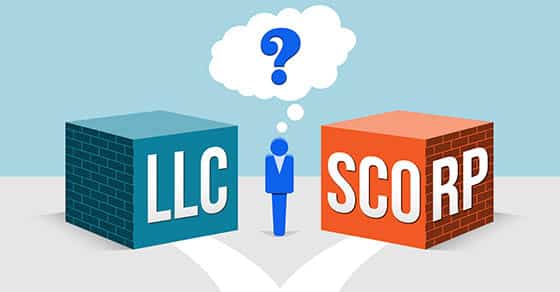When it comes to business structure, manufacturing company owners have a few choices. Among them are an S corporation and a limited liability company (LLC). They’re popular with manufacturers because of their combination of liability protection and tax benefits. Both forms have pros and cons, as well as some variations in tax consequences. Here’s an overview of these two business structures.
S corporation
Unlike in a C corporation, items of income and expenses are passed through to S corporation owners and reported on their individual income tax returns, similar to partners in a partnership. To qualify for S corporation status, the corporation must:
- Be a U.S. corporation,
- Have only eligible shareholders (including individuals and certain trusts and estates),
- Have no more than 100 shareholders, and
- Have only one class of stock.
An existing manufacturing company can switch to S corporation status by making an election by the 15th day of the third month of the tax year.
On the plus side, an S corporation:
Limits owners’ liability. Generally, S corporation shareholders can’t be held personally liable for debts of the company. Thus, creditors can’t come after their personal assets (except in limited instances).
Avoids double taxation (generally). A C corporation is subject to tax twice — once on income at the corporate level and again at the individual level when shareholders receive dividends. With an S corporation, income is generally taxable only at the individual level. In fact, an S corporation itself is exempt from federal income tax, though state tax treatment varies.
Provides tax-saving opportunities for owner-employees. An S corporation owner-employee can choose how much to receive as salary vs. income distributions from the corporation. Finding the right mix can save tax overall. Unlike salary, income distributions aren’t subject to payroll taxes. But the owner-employee must be paid a reasonable salary for services rendered. Otherwise, the IRS could reclassify distributions as salary, subject to payroll taxes, and also assess interest and penalties.
Eases ownership transfer. It’s generally easier to transfer S corporation shares than ownership in other business entities. It’s possible to do so without dire tax consequences even if the business is terminated. An S corporation also can survive the departure of its sole owner.
On the minus side, an S corporation:
Restricts ownership options. As outlined in the list above, the requirements under federal law are rigid. For example, depending on the situation, the limit on the number of shareholders or restriction to one class of stock may hamper operations. However, certain family members can be counted as a single shareholder.
Limits profit and loss allocations. An S corporation is required to allocate profits and losses among the owners based on the percentage of ownership or number of shares owned.
Is bound by state-based corporate formalities. S corporations are bound by the strict laws affecting corporations, imposed by the state. This means they must meet certain registration and regulatory obligations. Be aware that an S corporation must register to do business in other states outside of its home jurisdiction.
LLC
An LLC combines the liability protection of C corporations with the tax benefits of partnerships, but without some of the restrictions of S corporations. LLCs are authorized under state laws that vary around the country. (In fact, many states don’t restrict ownership.) LLC owners generally are referred to as “members.”
On the plus side, an LLC:
Reduces owners’ liability. As the name implies, the limited liability protection afforded to LLCs is a significant appeal to LLC members. Creditors generally can’t touch their personal assets. This benefit can’t be overemphasized. In fact, liability protection may be even greater for LLCs than S corporations under prevailing state laws.
Is taxed as a partnership. Unless an LLC elects otherwise, it’s typically taxed as a partnership. As a result, it avoids double taxation. An LLC owner may not even have to file a tax return for the LLC. However, a return is required if the LLC has more than one member.
Provides for profit and loss allocation. An LLC member may be entitled to receive a disproportionate share of income and expenses. Unlike an S corporation, the allocation doesn’t have to be based strictly on ownership percentages.
Offers ownership flexibility. There’s no limit on the number of members. Also, ownership is available to corporate and foreign entities.
On the minus side, an LLC:
May put owner-employees at a tax disadvantage. Generally, all business income that flows through to LLC owner-employees is subject to self-employment tax — even if it isn’t distributed to the owner-employee.
Can cause ownership transfer problems. It’s often more difficult to transfer ownership of an LLC than it is to transfer S corporation ownership. Unlike corporations, there are no shares of stock. Typically, all members must approve new members or changes in the ownership percentages of existing members. Also, a single-member LLC will automatically be terminated if the member exits the organization.
Weighing the pros and cons
Determining which form of ownership is right for your manufacturing company isn’t easy. There are many pros and cons to weigh before coming to a decision. We can provide the tax advice you need to help you make the right choice.
© 2024




